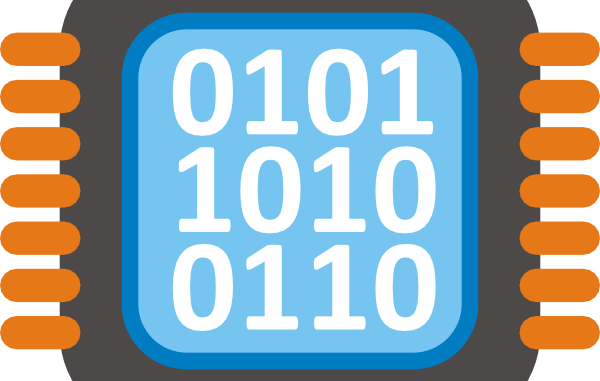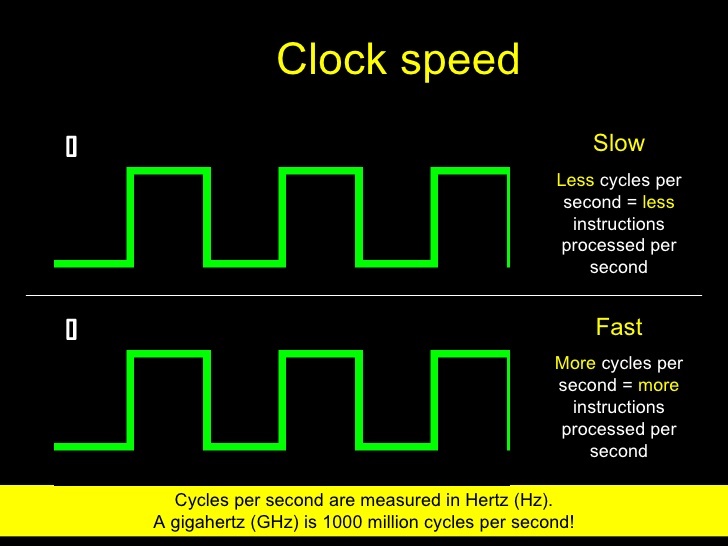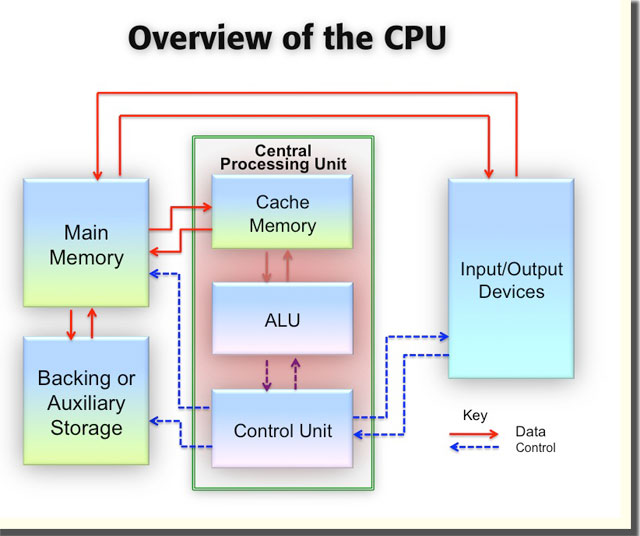
How CPU Works?
The computer processor also called the microprocessor and most commonly referred to as the central processing unit (CPU) carries out all the commands to the computer. It is often compared to the brain and called the brain of the computer. All the instructions the user gives to the computer is handled and carried out by the processor.
In computer stores, tech magazines, Facebook and Twitter posts one finds technical terms such as Intel core i7 6770, AMD A8-7670K and if you are not a computer geek it is quite easy to get confused. To know and understand about all the specifications and the how one processor compares to the other we must know what a processor really is and how CPU works.
What Are Processors?
The processor or the central processing unit (CPU) is a part of the hardware section of the computer. It is the most important part and the one that makes your computer tick. Whether you are trying to get an email sent or downloading your vacation pictures, the computer processor makes all of it possible. All the basic operations of the computer such as arithmetical, logical, and the intake and outtake of commands are all controlled by the CPU. The command you put in, no matter how complex or easy, all goes through the processor. The simplest example is when an user presses a key, suppose the ‘W’ button on the keyboard and it appears right beside your cursor on your monitor. The is the processor at work.
The quality in processors in normally measured by the speed in which they can carry out commands. The quality also depends on how well can a processor multitask and complexities of the programs it can run. But still the main component, people look for while getting a processor is still speed.
What are processors made of?
The processor is divided into many components which run the functions for the CPU. One of them is the Arithmetic Logic Unit (ALU) which controls the bit-wise functions and integer binary functions.
And there is the CU or control unit which basically controls the response mechanisms of the computer, it determines how the computer will react to logic instructions, input – output functions etc. For example, the control unit of the processor interprets memory and creates chains and series of signals to get other parts of the computer activated. The ALU or arithmetic – logic unit also depends on the control unit for instructions to carry out commands such as calculations, binary translations etc.
The third and the final component which completes the processors is known as cache. It controls storage of memory and output data.
Processors have changed since the early days when it contained so many different parts. Now there is one integrated system, and the parts are so well fused together that you can’t even see them clearly. The size of a processor nowadays is two inches by two inches.
CPUs are located in the motherboards, which have a special socket for the processors to fit in. The processor normally gets very hot, and have their cooling systems like the common fan inside the cabinet. Yes if you were, that is where all the heat comes from.
How do they work?
It is easy to say that the calculations occur in the ALU or the arithmetic logic unit, but what does that really mean? The computer’s world is binary, by that we mean it understands only zero and one. The processor’s stores these zeroes and ones with the help of the transistor. A one means a positive response while a zero means a negative response. These responses are followed by tiny switches controlling the flow of electricity. The transistors are placed over silicone chips, a chip can contain over a million transistors. A modern day computer can now hold around one billion to two billion such transistors. Every command for the computer is a calculation and they are carried out by these transistors. More transistors make the calculations faster and the whole process smoother.
Conclusion
The CPU mainly has two main functions of examining and reading data and carrying out commands. A quartz clock present inside the processor sends bits of electricity at a fixed duration. Every time it does so the computer performs a function and a series if these functions make things appear as they do to you. And although it seems very fast the computer performs one task at a time. The clock speed determines the rate at which the processor can carry out instructions. For instance, 2GHz means the computer can carry out two thousand million instructions per second.



Leave a Reply